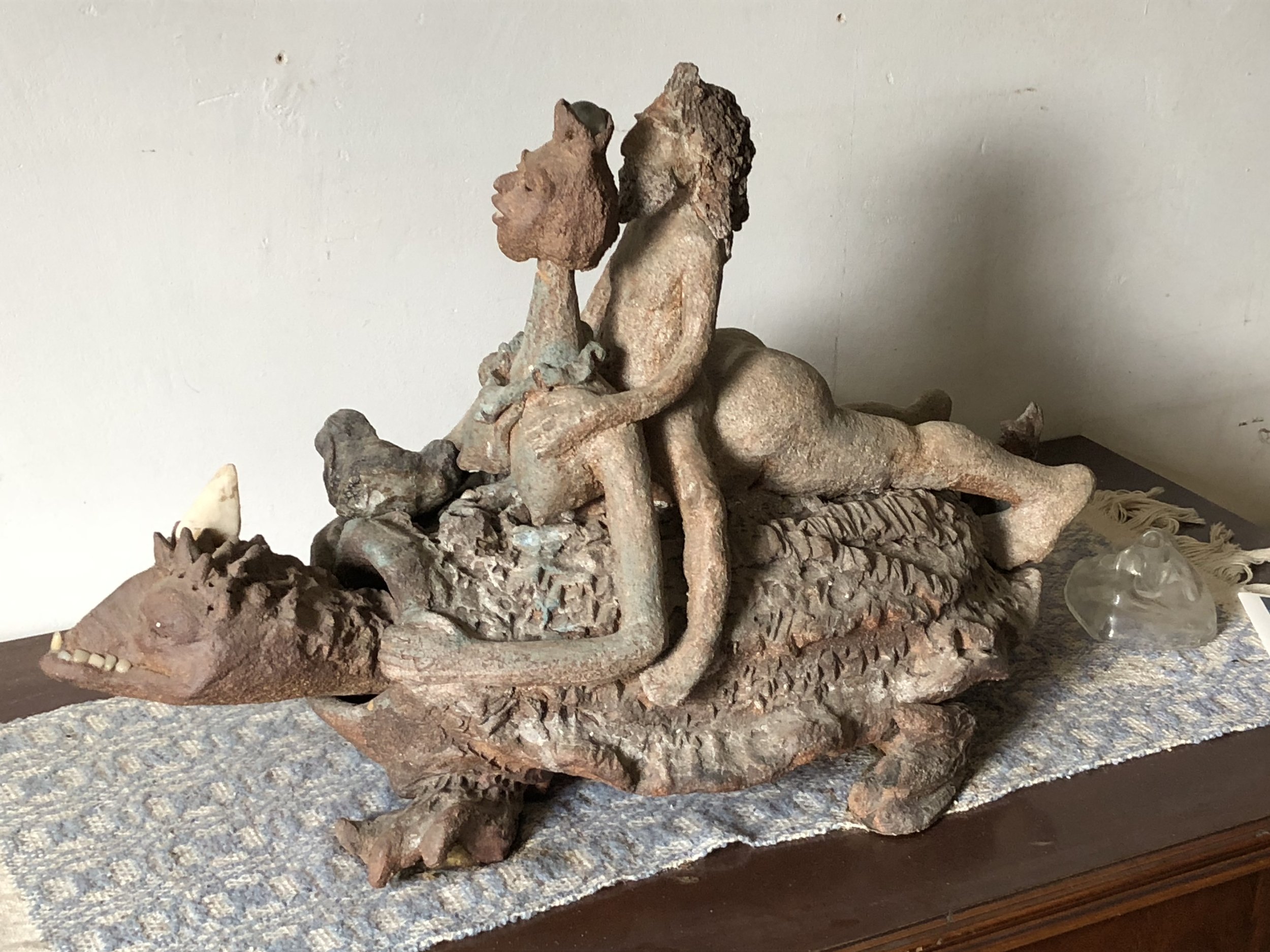From a news article from Chattanooga, Dec. 2, 2016 about moving of statue to new location.
Mr. Kratina was 52 years old when the Pioneer statue was dedicated, and it is not clear in one article whether he attended the dedication. But he was quoted in a multi-page Pioneer Bank section in the newspaper at the time as saying that the bank was looking for an expression of strength and fortitude in its main lobby when it commissioned the work.
“Nothing suited this better than the bank’s symbol, the Pioneer who settled and built for the future, so a nine-foot figure of the pioneer was decided upon.”
He went on to say that the Pioneer man was designed to look rugged, strong and one who perseveres, while also looking to the future with confidence and expectation.
“The light and shade values modeled into the forms are strong and organized to give motion, even though the figure is still and intent,” the sculptor said.
Although newspaper articles at the time called the statue a work of bronze, which was a favorite medium of Mr. Kratina along with wood, Mr. Jackson believes it is made of chicken wire, plaster and perhaps some material like fiberglass.
What is for sure is that the sculptor had a golden reputation. Born in the Czech Republic to an artisan father, Mr. Kratina showed promise early on as a sculptor, winning mention in the prestigious Prix de Roma competition at the age of only 14.
In the 1936 Olympics at Berlin at a time when various fine arts competitions were also part of the games, he competed in the mixed sculpturing, statues category judged at an exhibit hall on the Kaiserdamm boulevard in Berlin.
Out of the more than 100 entries, the former Yale rower’s sculpture of a crewman received praise, as it finished in a group of 18 garnering serious consideration. This group was just behind the three medal winners and the 14 artisans who received honorable mention.
He went on to teach at Cooper Union in New York City and Rensselaer Polytechnic Institute in Troy, N.Y.
In a heartfelt reminiscence posted online, a man named Phil Garrow wrote in recent years of helping Mr. Kratina with his sculpturing work as a teenager before Mr. Kratina died in 1980.
He said that Mr. Kratina and his wife, Anna, a nurse, had moved in the 1950s from their home in New York City to a more rural farmhouse in Old Chatham, N.Y., where his work studio was. That was evidently also when he became a professor at RPI.
Mr. Garrow recalled that Mr. Kratina had a strong work ethic but a positive and upbeat attitude and was encouraging to everyone with whom he came in contact.
He said that Mr. Kratina had his own way of producing his sculptures. He would first create a smaller sculpture out of plasticine clay, and then cover it in plaster before removing the latter in smaller segments.
At that point, the plasticine clay sculpture would be destroyed, and the broken outer pieces would be used to make the mold after Mr. Kratina rubbed a soapy substance on their insides.
After the new inner sculpture would harden, he would break away the outer mold, Mr. Garrow said. Then he would create the larger main sculpture using a three-dimensional pantograph copying machine and repeating the process again.
Mr. Kratina’s works include sculptures of the Troy, N.Y., meatpacker Sam Wilson, the man on whom the figure of Uncle Sam of patriotism fame was reportedly based; a wooden figure at the York, Pa., post office; the saints St. Joseph, St. Patrick and St. Francis at a church in San Francisco, and a statue of St. Leonard at the St. Leonard Franciscan living community in Centerville, Ohio.














































































































































